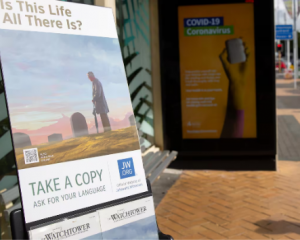A national bowel screening programme announced last week has been given a "red" rating by Treasury - indicating it could cost more and take longer to roll-out than expected.
Treasury is monitoring the Government's riskiest projects, which together total more than $20 billion. Its latest report has been released today.
The bowel screening programme - announced in last week's Budget - is included for the first time and came up "red", the worst possible risk rating.
That is in contrast to the confident assessment by the Ministry of Health, who gave it a "green" rating.
The roll-out would be delivered in three tranches, with most district health boards having programmes start in 2018 and 2019.
But Treasury officials said a "highly compressed" three-month timeframe for completing a business case meant there wasn't sufficient time to consult with the health sector.
Specific areas of concern listed are if there are enough medical professionals for the programme, the development of needed IT systems, screening method options, and "an assumption that DHBs will absorb related costs".
Budget 2016 set aside $39.3 million over four years to implement the national programme.
The investment built on the successful Waitemata DHB bowel screening pilot, which has been running since 2012.
A business case for the bowel screening roll-out will be put to Cabinet shortly.
Health Minister Jonathan Coleman has previously said the main constraint on creating a national programme would be having enough colonoscopy staff, but schemes were underway to address this.
Once in place, DHBs will offer people aged 60 to 74 a bowel screening test every two years.
The November 2015-February 2016 Major Projects Performance Report is the third of its kind and provides an update of 43 projects.
The projects, which span 22 agencies, are assessed using a five-point scale ranging from "red" through to "amber" and then "green".
Customs' troubled Joint Border Management System (JBMS) has gone from an "amber" rating to "amber/red".
JBMS merged the computer systems of Customs and the Ministry for Primary Industries, and was originally supposed to be finished by the end of 2012 at a cost of $75.9 million.
Labour has been on the attack over the project after its budget increased to $104.1 million, when it was decided to split the first stage of JBMS into multiple steps, because of the risk of problems if too much was transferred at once.
In its latest assessment, Customs said testing was progressing slower than planned and would not meet commercially agreed timeframes: "a revised delivery plan and related commercial agreement to cover Crown costs and achieve acceptable timelines are being prepared for Governance review and approval".
Treasury noted its assessment had declined to "amber/red" because the target implementation date of May 2016 was missed.
The Canterbury Earthquake Recovery Authority (CERA)'s Convention Centre Precinct project was also rated "red", with Treasury recommending a Plan B be put in place in case of "slippage".
The larger Christchurch Central Delivery Programme has improved from a "red" to "amber/red", "following remediation actions and lower risk ratings on individual projects".












